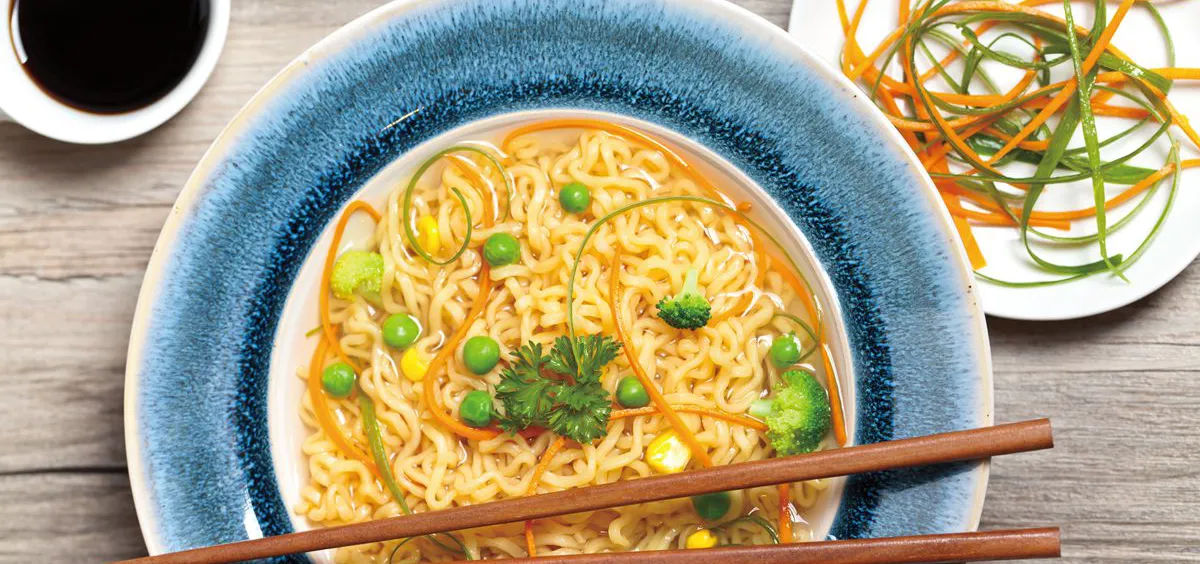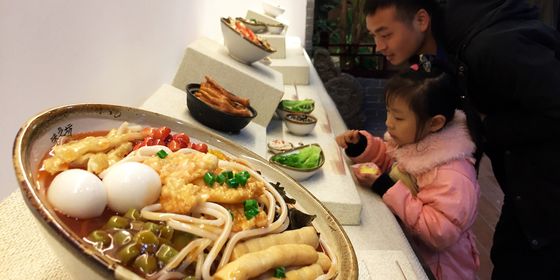China’s most ubiquitous snack is going high-end
When Midnight Diner, a widely panned Chinese adaptation of the Japanese drama of the same name, premiered in 2017, the characters’ habit of going to a restaurant for instant noodles became a particular target for online mockery.
Those critics had to eat their words, though, after one “instant noodle diner” went viral on video app Douyin the following year, causing foodies from Shenzhen to Huai’an, Anhui, to queue up at similar joints that soon opened around the country. The original restaurant, Xi’an’s Little Noodle Canteen, was lauded for giving the blue-collar meal “the feel of Western food”—with ceramic bowls, added toppings like cheese and seafood, and an 80 RMB price tag.
“Consumption upgrade” is coming to the instant noodle market, according to Master Kang, the biggest Chinese distributor of the wavy treat. Sales of instant noodles in China had been in steady decline from 2013 to 2016, reported marketing research firm Qianzhan, but sales of Master Kang and its rival, Tongyi, sales picked up by as much as 8 percent this year.
Master Kang’s 2018 annual report attributed its success to the company’s “product upgrade”—a “super high-end” line of noodles, with flavors like abalone and prices of 25 RMB a pack, whose release last November spawned the meme “If you don’t work hard, you’ll no longer be able to afford instant noodles.”
The mainland’s first instant noodle brand was founded in the 1960s. From 1980 to 2000, China was the biggest global instant noodle market: Costing 0.25 RMB, plus two meal coupons, as of 1986, they were a filling choice for migrant workers and students in the post-Reform economy.
Rising income levels, better nutritional knowledge, and food-delivery apps have been blamed for the snack’s recent decline. Paradoxically, though, the treat has become fashionably associated with the “Korean wave” of popular K-dramas, whose characters typically add kimchi, rice cakes, beef, and other toppings to create an actually enticing meal.
At the Little Noodle Diner in Beijing’s Nanluoguxiang, “Korean-style” seafood, kimchi, and cheese noodles rank as the second, third, and fourth most popular items on the menu, according to review app Dianping. The restaurant’s success also appears closely linked to the recent push for artisanal noodle flavors in the market, as an array of noodles in their original packaging, from Sichuanese dandan to Japanese pork-bone ramen recipes, are displayed in cages on the wall for diners to choose as their base meal before ordering toppings.
And for those still unconvinced of the value of their meal, there’s always the aggressively white interior and lighting. “Typically, instant noodles imply solitude and a lack of nutrition,” customer Wang Zhuolun, who spent over 20 RMB on a bowl of seafood noodles, tells TWOC. “In a chic restaurant, you are immersed in conversation with friends and forget the meaning of instant noodles.”
Instant Attraction is a story from our issue, “Funny Business.” To read the entire issue, become a subscriber and receive the full magazine.













